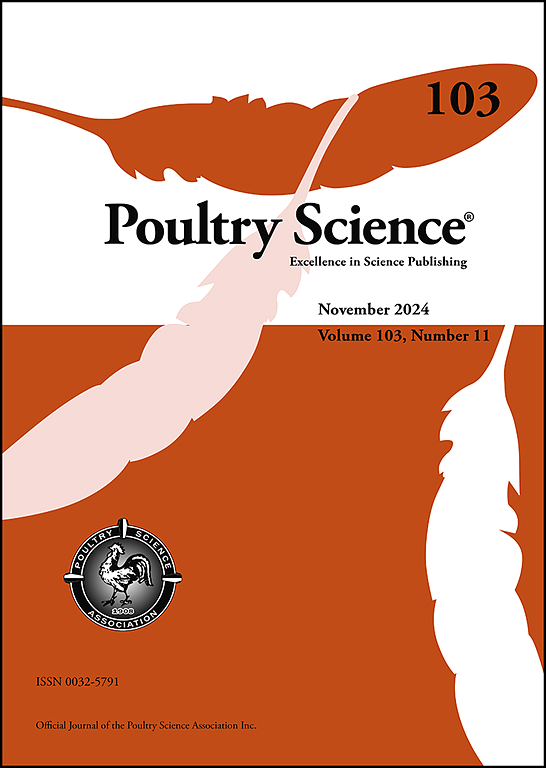A life cycle assessment of broiler chicken meat and egg production in Iceland
IF 3.8
1区 农林科学
Q1 AGRICULTURE, DAIRY & ANIMAL SCIENCE
引用次数: 0
Abstract
As the world population grows, so does the production and consumption of emission-intensive foods. To reduce environmental impacts of food systems, significant and immediate changes are needed, both by adopting more environmentally sustainable practices and changing people's diets. To evaluate these strategies in connection with their potential environmental impacts, additional research is required on staple food systems. This study aims to assess the potential environmental impacts of broiler chicken meat and egg production in Iceland, which have become important protein sources among its inhabitants. Life Cycle Assessment (LCA) was used to evaluate and analyze possible environmental impacts. Although both products are derived from the same species, the common practice amongst farmers is to produce broiler chicken meat and eggs in separate housing systems, and thus, each system was modeled independently from each other. The system boundary for broiler chicken meat production was cradle-to-slaughterhouse gate with the functional unit (FU1) of 1 kg of broiler chicken (carcass weight). The life cycle stages included feed production, rearing of birds, manure management, and slaughterhouse for broiler chicken. In addition, a scenario analysis with the functional unit based on 100g of edible protein was also conducted to assess the impact for meat only. For egg production, the system boundary used was cradle-to-farm gate, with the functional unit (FU2) of 1 kg of eggs.
Results showed that feed production has the greatest environmental impact within the life cycle of both broiler chicken meat and eggs for the analyzed impact categories. Most of the impact was caused by wheat, soybean, and maize, all of which are commonly used in poultry feed at a global level. The results showed that Icelandic poultry production has lower environmental impact compared to other international studies. Furthermore, the outcome could be used when assessing the impacts of Icelandic dietary guidelines in the future.

求助全文
约1分钟内获得全文
求助全文
来源期刊

Poultry Science
农林科学-奶制品与动物科学
CiteScore
7.60
自引率
15.90%
发文量
0
审稿时长
94 days
期刊介绍:
First self-published in 1921, Poultry Science is an internationally renowned monthly journal, known as the authoritative source for a broad range of poultry information and high-caliber research. The journal plays a pivotal role in the dissemination of preeminent poultry-related knowledge across all disciplines. As of January 2020, Poultry Science will become an Open Access journal with no subscription charges, meaning authors who publish here can make their research immediately, permanently, and freely accessible worldwide while retaining copyright to their work. Papers submitted for publication after October 1, 2019 will be published as Open Access papers.
An international journal, Poultry Science publishes original papers, research notes, symposium papers, and reviews of basic science as applied to poultry. This authoritative source of poultry information is consistently ranked by ISI Impact Factor as one of the top 10 agriculture, dairy and animal science journals to deliver high-caliber research. Currently it is the highest-ranked (by Impact Factor and Eigenfactor) journal dedicated to publishing poultry research. Subject areas include breeding, genetics, education, production, management, environment, health, behavior, welfare, immunology, molecular biology, metabolism, nutrition, physiology, reproduction, processing, and products.
 求助内容:
求助内容: 应助结果提醒方式:
应助结果提醒方式:


